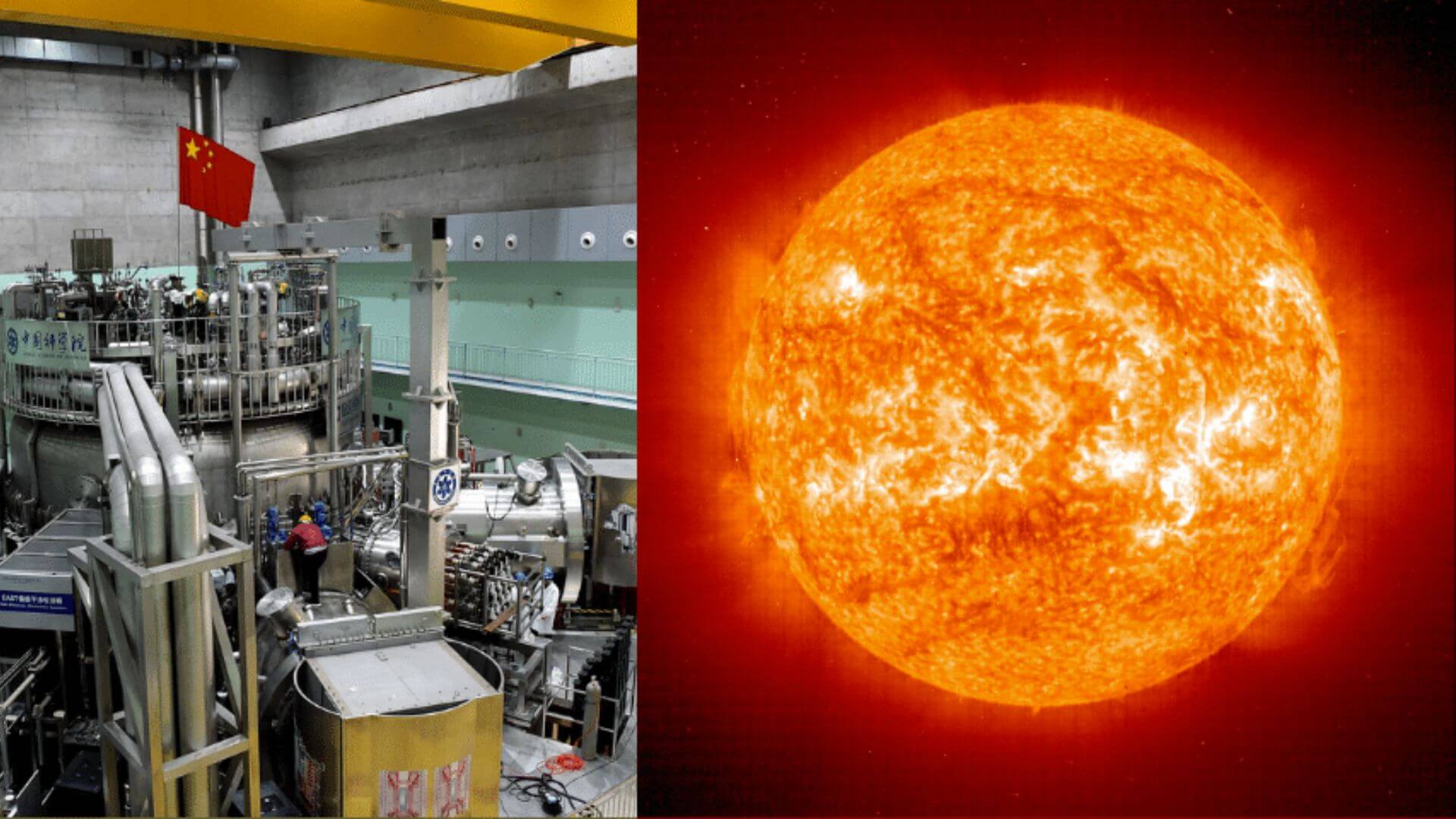The EAST prototype has managed to keep the plasma stable, albeit at lower temperatures than in previous experiments and below the melting temperature
Many countries are experimenting with future fusion reactors, which promise unlimited, clean energy from the stars. One of the nations that have been making the greatest effort in recent years is China. If just six months ago it announced that its experimental advanced superconducting tokamak reactor ( EAST ) had been able to maintain a plasma temperature of 120 million degrees Celsius for 101 seconds, now the same team has achieved another feat: sustaining the plasma for 1,056 seconds. (17 minutes). Of course, at a lower temperature: 70 million degrees Celsius.
“We achieved a plasma temperature of 120 million degrees Celsius for 101 seconds in an experiment in the first half of 2021.
This time, the plasma operation in steady state was maintained for 1,056 seconds at a temperature close to 70 million degrees Celsius, which has left a solid scientific and experimental basis to better understand the operation of fusion reactors,” he said. In a statement, Gong Xianzu, a researcher at the Institute of Plasma Physics of the Chinese Academy of Sciences (ASIPP), who is in charge of the experiment carried out in Hefei, the capital of Anhui province in eastern China.
The goal is to emulate star power and create massive amounts of energy by injecting a small amount of deuterium and tritium (hydrogen) gas, which is heated to high temperatures and becomes an ionized plasma. However, for a chain fusion reaction to take place, that plasma has to be heated to 150 million degrees Celsius, more than double that of the Chinese reactor, which, moreover, has carried out the experiments only with deuterium, without getting to introducing tritium.
A success, but not a milestone
Because the reactors will be functional when they manage to maintain the plasma at these temperatures for a long time. “This is a serious experiment, the biggest Chinese machine. But it is not, in the world environment, the one that reaches the best parameters in terms of fusion gain; that is, in energy obtained compared to that used in the reaction, ” Joaquín Sánchez, director of the National Fusion Laboratory, dependent on the Ciemat, explains to ABC. “They have specialized in long pulses, which is interesting technologically, but it is a lesser degree from a physics point of view.”
In fact, there are still no scientific publications (not even in preprint format) explaining the specific experiment, so there are some gaps in how this success has been achieved. «With the existing public information it is not known if the temperature of the electrons has been increased, which is the most probable; or that of the ions, more difficult to raise when long pulses are made powered by radiofrequency”, indicates Sánchez. ” There has been progressing in stretching the pulse, but it is not a ‘historic’ advance .”
Differences with the ITER project
The Chinese prototype is the first tokamak model with a non-circular cross-section, although the Asian giant has other similar experiments, such as the HL2M and HL2A, whose difference is that they are not superconducting and are smaller. The EAST would be the machine most similar to the ITER project, (International Thermonuclear Experimental Reactor), a large-scale scientific experiment intended to prove that fusion reactors are viable. This prototype, created by an alliance between the European Union, Japan, the United States, South Korea, India, Russia, and China itself, aims to generate a plasma in which ten times more energy is produced through fusion than is inserted to keep it warm.
In a commercial reactor, the high-energy neutrons produced by fusion are collected in the lithium shell which, apart from regenerating tritium to maintain the reaction, heats the coolant and generates steam. This steam will drive turbines to produce electricity.
The first tests are scheduled to begin at the Cadarache (France) facilities in 2026, although the infrastructure is still under construction. However, when the experiments begin, they will be much more ambitious than those of China alone: in the first tests, the aim is to reach 500 seconds of work at high power (just over 8 minutes) and 1,500 at medium power (25 minutes ). ), in both cases with temperatures above 100 million degrees and with energy gain. “If we compare it with EAST, it is another dimension,” says Sánchez.
